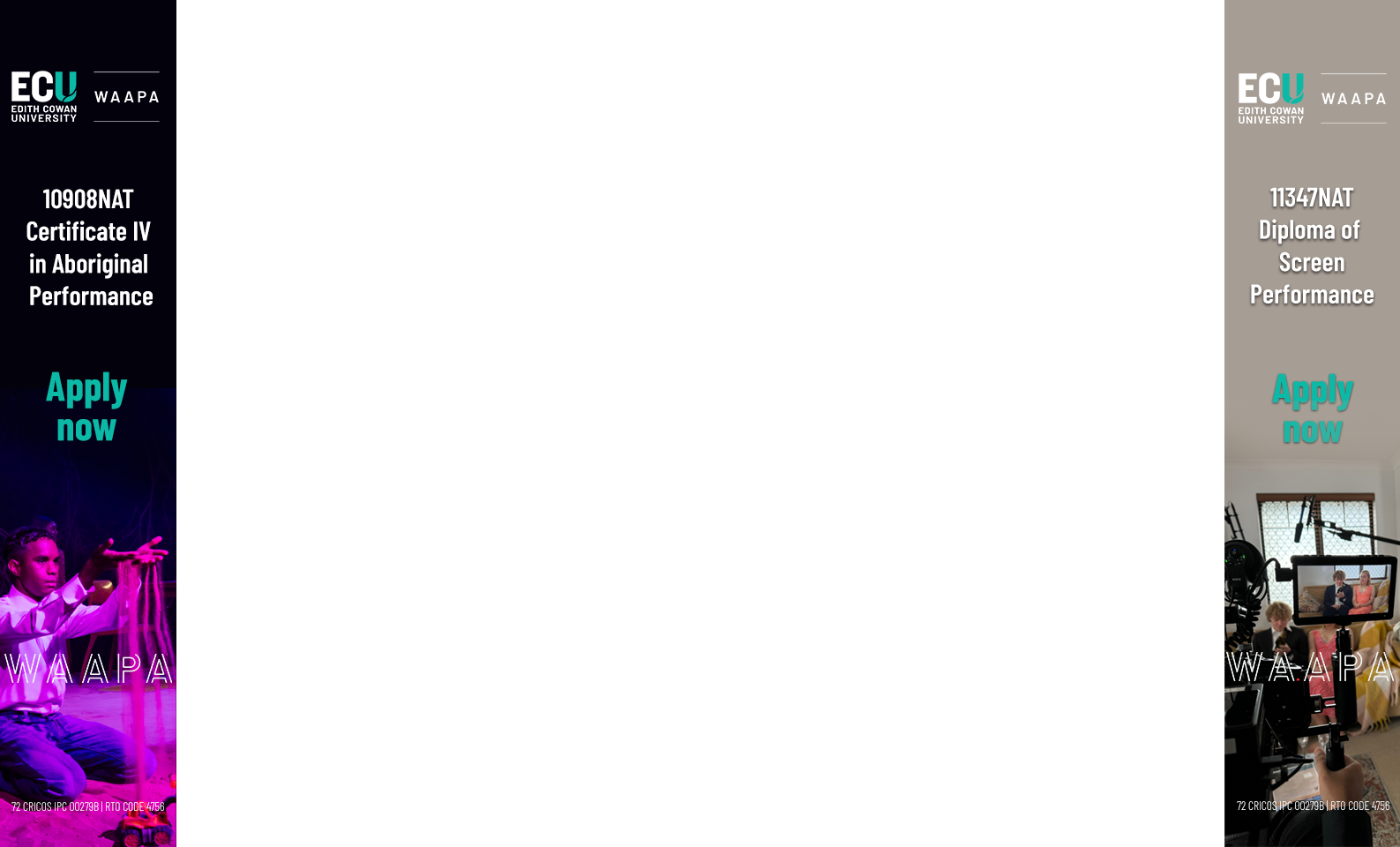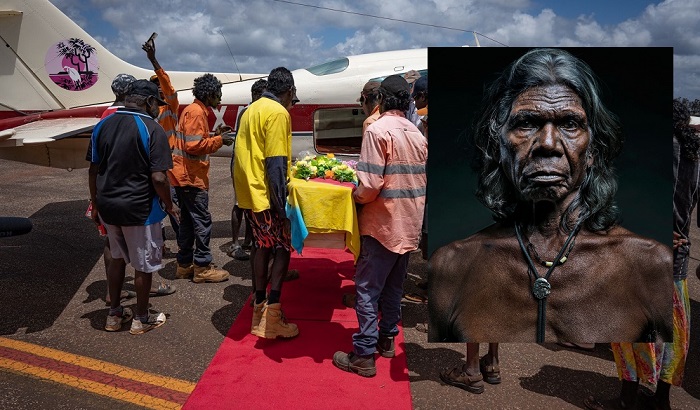By Julian Wood
Co-directors Maggie Miles and Trisha Morton-Thomas take an epic ride across Australia with their new documentary Journey Home, David Gulpilil.
David Gulpilil is justifiably the most well-recognised Indigenous Australian film actor of his generation. His long career spanned more than four decades and included some of the most memorable films telling First Nations stories. A few years ago, Molly Reynolds and Rolf De Heer gave us the moving and career-encompassing documentary My Name is Gulpilil. The actor passed away in 2021. He had been living in Adelaide, and it was his wish to be returned to his original country of Gulpilil, a tiny, isolated community in the Arafura Swamp (Gurruwilling) over 450 kilometres east of Darwin. Given that the land is impassible for large chunks of the year in the wet season, it would be no mean feat for the legendary actor’s Yolngu kin to get his coffin to its final resting place. This epic journey is carefully and imaginatively documented by co-directors Maggie Miles and Trisha Morton-Thomas in Journey Home, David Gulpilil.
Given that the film concentrates almost exclusively upon Indigenous processes and protocols, we wondered how much of this the filmmakers wanted to explain to non-Indigenous audiences, or indeed if they felt it was appropriate to show at all. “We present just enough information so it all makes sense, but not so much that it gets confusing,” says Maggie Miles. “And, because so many of the family were involved, there is so much that audiences would not know about, but culturally everything is in the right place.”
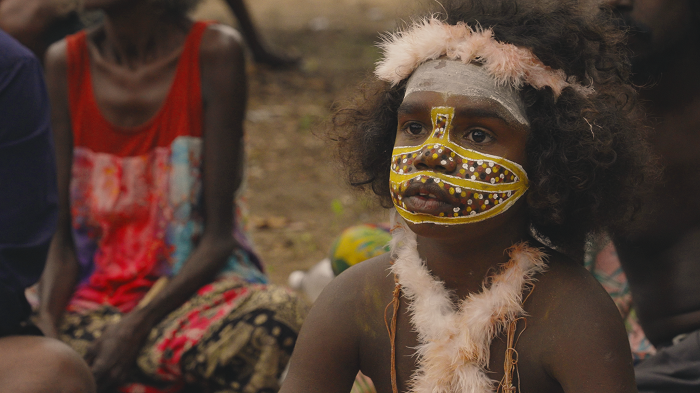
FilmInk wondered if the filmmakers were conscious of steering away from repeating aspects of the actor’s life that were covered in the previous film My Name is Gulpilil. “Yes, he has already told us about his life in that film, and it would be presumptuous to think we could add more to that, so for us, the focus was on this incredible family who have moved mountains to fulfill this promise to get him home,” explains Trisha Morton-Thomas.
We note that the film resists captions (after all, it is not an illustrated lecture), so what was the focus for them? “His message was always about educating and teaching people about his culture,” replies Morton-Thomas. “And so, it was important to us that audiences understood it.”
There are some sparely-used voiceovers though, including contributions from musician, rapper and storyteller Baker Boy, who acts as more of a cultural guide. There is also voice over work done by Hugh Jackman, who had appeared with Gulpilil in Baz Luhrmann’s epic Australia. We wondered how that name came to be attached to the project. “What about that voice though,” laughs Morton-Thomas. “We went to the family and said, ‘We are going to need a narrator…who do you want?’ Hugh Jackman was at the top of their list, so we reached out and bless him, he said righto.”
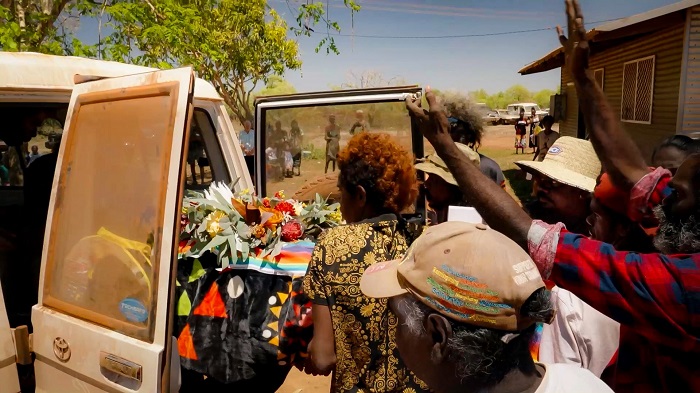
Neither Maggie Miles nor Trisha Morton-Thomas wanted to be too self-consciously calling attention to their filmmaking. Instead, they wanted to tell the story as the Yolngu people themselves would tell it. The film is not something that can ever be staged or, in a sense, repeated. It just is. “That decision led us to the heart of it which is about land and spirit,” explains Maggie Miles. “Often it happens that you happen to be in the right place at the right time and something extraordinary can happen.”
When asked about what the non-actors felt about being on film and any challenges that might ensue from working with them, Morton-Thomas explains that “they’re not precious about their own culture because they live.”
Some Indigenous protocols discourage using the name of people who have recently passed, and we wondered if that was a constraint. “It is important to say that the family have given full permission to use David’s name in the title, and for the promotion of the film, but actually when we were up on country, we didn’t use his name,” says Maggie Miles. “Obviously, one of the things you think about while watching the film is the nature of the logistical and organisational challenges.”
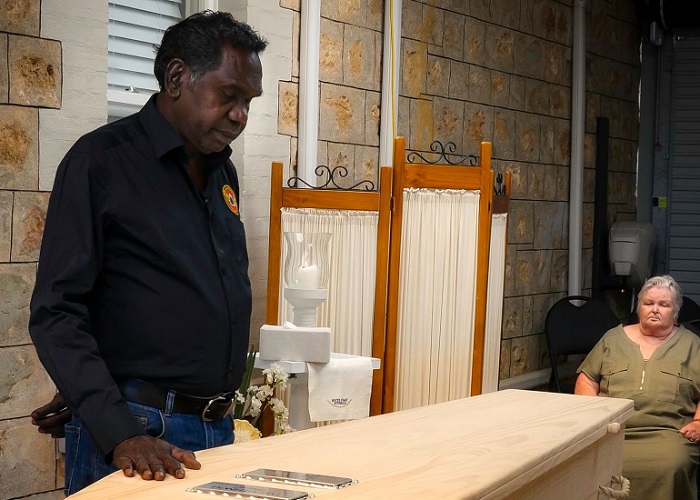
You find yourself wondering not only how did they get that shot but how did they get to the location at all. Maggie Miles talks breezily about some of the almost absurd physical obstacles. “It was a great adventure! Gulpilil [the place] is in the middle of the Arafura swamp. I went up earlier on a reccy actually filming all the while and a lot of that ended up being used in the film. You have to realise what sort of country it is. The journey takes so many stages. At the end, you go in a four-wheel drive, and there is no road…just a track! And then you get to the tidal river – which is infested with crocodiles, by the way – and then, when you want to cross the river, you have to go in [David’s brother] Jamie Gulpilil’s tinnie, which is a really beautiful, bashed-up thing. It has no engine and no oars, so you use an old shovel or a big leaf, and then, when you cross, you have to go through a mangrove swamp for another twenty minutes carrying everything you need! And when you get there, you have to camp and there is no toilet, no shop, no electricity…but there was mobile coverage, which was a blessing!”
Such a big effort deserves to be appreciated on the big screen. “We are releasing theatrically, and that is our focus now,” says Maggie Miles. “David Gulpilil was a star of the big screen, and the act of seeing the film should be an immersive experience. We hope that people accept that invitation from the family to say goodbye to him by going and seeing it that way.”
Journey Home, David Gulpilil is in cinemas now.
